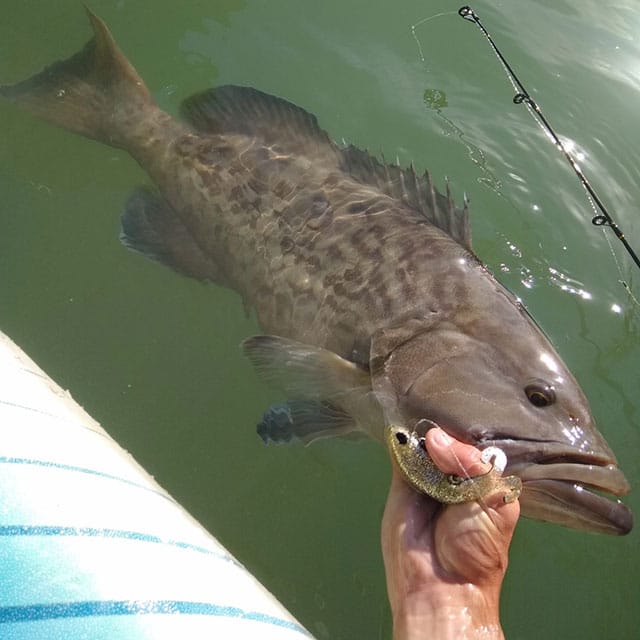Grouper are one of the most highly sought after offshore species, especially on Florida’s Gulf coast. There’s nothing like riding 30 miles offshore in pursuit of these awesome gamefish. However, some days, anglers may not want to run way offshore or the conditions simply may not allow it.
Many anglers might not know, however, that there are a certain population of these fish that live inshore and can be caught year-round. I didn’t discover this until a few years ago, but have taught myself how to catch gag, black, red, and even the occasional goliath grouper in my home waters on Florida’s west coast.
Today, I’ll break down my favorite ways to go about catching these hard fighting fish and prove that anglers can catch good numbers of good sized grouper without having to go 30 plus miles offshore.
Where to Target Inshore Grouper
When anglers are targeting grouper offshore, they look for hard bottom with structures such as rock and reef, as well as changes in the depth. Grouper use this cover to hide under and around.
Similarly, inshore anglers will want to target grouper in areas with good hard structure that will provide a suitable defense from predators. Shallow inshore reefs, rock piles, jetties, inlets, bridges, and boat docks are among the best places to target grouper inshore.
Best Baits/Lures for Targeting Inshore Grouper

Anglers can target grouper inshore with both live bait and artificial lures.
Grouper will eat nearly any live or cut bait, however, some of best include pilchards, threadfins, sardines, pinfish, and mullet. A live bait often works best, but sometimes grouper only want a dead cut bait instead, so its good to try some of both.
When it comes to artificial lures, grouper love a large profile bait. Big swimbaits, jigs, soft-plastic jerkbaits or imitator shrimp are all great options. Some of the color patterns that seem to get more bites for me include gold, silver, bone, and pearl white. However, anglers can experiment until they find what works best for them.
Best Tackle for Grouper
Grouper are extremely powerful fish and are basically one big muscle. If anglers aren’t prepared with the proper gear when targeting these strong fish, they don’t stand a chance at landing a grouper of any size.
When targeting grouper inshore, I like a 7’ heavy spinning rod paired with a 6000 sized reel. I spool it with 40-pound braided line and tie a 40-60 pound fluorocarbon leader to my braid. Anglers must use this heavy tackle or they risk breaking off more fish than they land.
If using live bait, I go with a no less than a 4/0 circle hook and oftentimes go with a bigger hook if my bait is on the large side.
If using artificial lures, I make sure that my hooks are heavy duty and durable enough to withstand the pressure of a large grouper. I don’t want light wire hooks when targeting grouper.
Additional Tips
Current is key
I’ve found that a lot of times, grouper bite better in a current. Even if it’s just a little current, those fish seem to eat better when the water is moving. Areas such as bridges, jetties and docks all naturally have current around them, making them great areas to target grouper.
Always be ready for a strike
Grouper are typically super aggressive and tend to strike a bait or lure very hard. Anglers must be ready for a strike so they aren’t caught off guard by one of these fish. In addition, once a grouper is hooked, the quicker an angler can fight the fish away from cover, the better. When fishing super heavy structure, such as boat docks, if anglers don’t get the fish coming toward them and away from the cover within the first few seconds of being hooked up, the fish will most likely win the battle.
Where there is one, there is many
Grouper will often stack up on one piece of structure. Therefore, if an angler catches one grouper off a certain rockpile or dock, there are probably several more fish around that cover. Trying multiple baits and tactics in this type of area can result in a few more fish being brought aboard.
Back to You
Grouper fishing inshore is a blast and something I recommend every inshore angler should try. It’s a technique that can take some time getting used to, especially if you aren’t familiar with it. But it’s definitely worth trying and is much more efficient and cost-effective than traveling more than 30 miles offshore for grouper.
Keep these tips in mind the next time you find yourself inshore fishing and give grouper fishing a try. You won’t be disappointed! As always, thanks for reading and keep your hooks wet!
